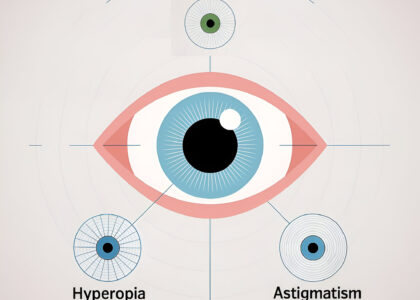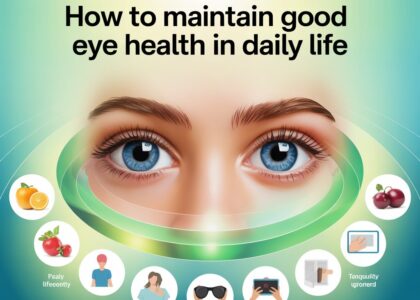In today’s digital age, many of us spend long hours in front of screens—whether it’s for work, entertainment, or staying connected with loved ones. However, prolonged screen time can lead to digital eye strain, also known as computer vision syndrome. Moreover, exposure to blue light can have other adverse effects on our eye health. Therefore, here’s how you can protect your eyes from digital strain and blue light:
1. Follow the 20-20-20 Rule
One of the simplest yet most effective ways to reduce eye strain is to follow the 20-20-20 rule. Every 20 minutes, take a 20-second break and look at something 20 feet away. This practice helps relax the eye muscles and reduce fatigue.
2. Adjust Your Screen Settings
- Brightness and Contrast: Ensure your screen brightness matches the lighting of your environment. If your screen looks like a light source, it’s too bright. Thus, adjust the contrast to make reading easier.
- Text Size and Color: Increase the text size for comfortable reading. Black text on a white background is easiest on the eyes.
- Anti-Glare Screen: Use an anti-glare screen protector to minimize reflections and glare from external light sources.
3. Optimize Your Workstation
- Screen Position: Place your screen about an arm’s length away (20-24 inches) and slightly below eye level.
- Lighting: Position your screen to avoid glare from windows or overhead lighting. Use blinds or curtains to reduce glare, and adjust your lighting to eliminate harsh reflections.
- Ergonomic Setup: Ensure your chair supports your back, and your feet are flat on the floor. This setup can reduce overall physical strain and improve your posture.
4. Use Blue Light Filters
- Computer Glasses: Consider wearing computer glasses with blue light blocking lenses. These glasses can filter out a significant amount of blue light emitted from screens.
- Screen Filters: Install blue light filter software or use the built-in blue light filter settings on your devices, often called “Night Mode” or “Blue Light Shift.”
5. Blink More Often
Staring at screens can reduce your blink rate, leading to dry and irritated eyes. Make a conscious effort to blink more often to keep your eyes moist. You can also use artificial tears to lubricate your eyes if they feel dry.
6. Take Regular Breaks
In addition to the 20-20-20 rule, ensure you take longer breaks throughout the day. Stand up, stretch, and walk around to give your eyes and body a break from sitting and staring at the screen.
7. Maintain a Healthy Diet
Certain nutrients are essential for eye health. Include foods rich in omega-3 fatty acids, vitamins A, C, and E, and zinc in your diet. These nutrients can help maintain eye health and reduce the risk of digital eye strain.
8. Get Regular Eye Exams
Regular eye exams are crucial for maintaining eye health, especially if you spend a lot of time in front of screens. Your eye doctor can detect any early signs of strain or damage and recommend appropriate measures or corrective lenses to reduce discomfort.
Conclusion
By incorporating these practices into your daily routine, you can significantly reduce digital eye strain and protect your eyes from the harmful effects of blue light. Remember, taking care of your eyes is essential for maintaining overall eye health and ensuring that you can continue to enjoy the benefits of digital technology without discomfort. If you experience persistent eye strain or other vision problems, consult with an eye care professional for personalized advice and treatment options.







